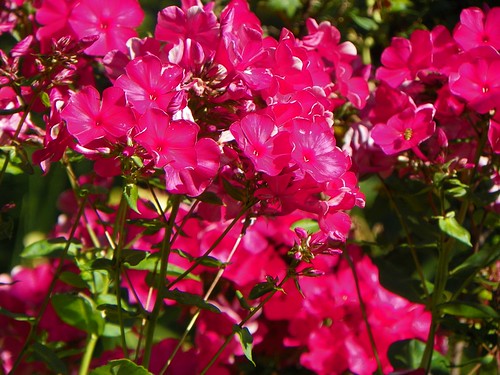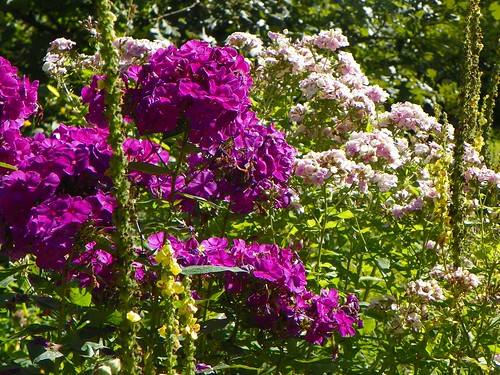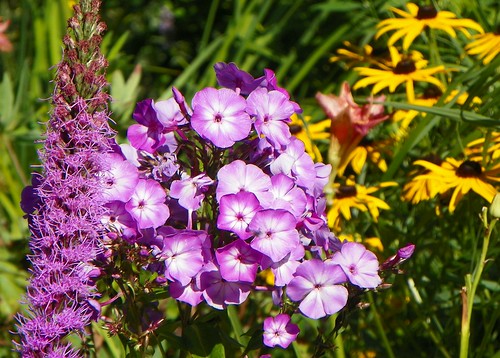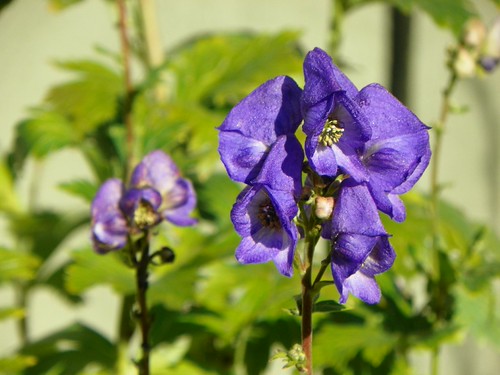
I enjoy the spring garden. Everything is shiny and green after the dull months of winter, but beyond that, everything is neat and tidy and in its place, all the little plants just getting started. By mid-August, all that’s past. Now the baby plants are like so many gloriously exuberant teenagers, wild and rambling and definitely no longer under their gardener-mother’s thumb. In the tumble of plants, phlox makes a brilliant statement.

Several of my most vibrant phlox plants predate my arrival as head gardener, and have been keeping company with the ‘Dart’s Dash’ rugosa roses for years. I especially like this standout pink.

This bright purple is very eye-catching as well. It looks good with the yellow spikes of verbascum nigrum.

Its neighbour is the much more sedately coloured Sherbet Cocktail (Phlox paniculata ‘Sherbet Cocktail’).

Pictured above is Norah Leigh (Phlox paniculata ‘Norah Leigh’), which is actually better known for its variegated leaves than its pink and white flowers.

And this is Bright Eyes (Phlox paniculata ‘Bright Eyes’), blooming with the daylily ‘Dallas Star’, just ending its season, and Joe-Pye Weed (Eupatorium ‘Phantom’), just coming into bloom.
Finally, here is an unknown mauve phlox, blooming with purple liatris (Liatris spicata) and Black-eyed Susan (Rudbeckia fulgida ‘Goldstrum’).
Phlox is prone to powdery mildew, which disfigures the leaves with ugly white blotches. I never worry about such trivia. The surrounding plants mostly hide the blotchy leaves, and the plants mostly survive from year to year. It all works out.












